Do you have a question about the Cessna 172 Skyhawk 1972 and is the answer not in the manual?
Perform an exterior inspection of the aircraft for general condition.
Check essential systems and controls before engine start.
Details on fuel supply, tanks, selector valve, and system operation.
Description of the aircraft's electrical system, power supply, and components.
Operation and function of the main battery and alternator switch.
Function of the ammeter in indicating electrical system current flow.
Troubleshooting and remedies for electrical system malfunctions.
Diagnosing and rectifying engine roughness or power loss.
Procedures for forced landings, both with and without engine power.
Guidelines and procedures for ditching the aircraft.
Steps to take for engine or electrical fires during start or flight.
Aircraft approval for operations and applicable certifications.
Permitted maneuvers and load factors for normal category operations.
Maneuvers permitted in the utility category, including entry speeds.
Certificated calibrated airspeed limitations for the airplane.
Color-coded markings on the airspeed indicator.
Limitations on engine power and speed settings.
Markings for oil temperature and pressure gauges.
Safe procedures for maneuvering the airplane on the ground.
Proper tie-down procedures to secure the parked aircraft.
Recommended methods for cleaning plastic windshields and windows.
Guidance on cleaning and maintaining exterior painted surfaces.
Cleaning and maintenance of aluminum surfaces.
Inspection and maintenance of propeller blades.
Cleaning procedures for upholstery, carpet, and interior surfaces.
Guidelines for aircraft storage and propeller rotation.
Details on required inspections and service intervals.
Required documents and licenses to be kept in the aircraft.
Information on aircraft identification and finish codes.
Daily checks and servicing for fuel tanks, strainer, and oil levels.
Specific maintenance tasks required after the first 25 hours of operation.
Regular servicing intervals for the battery and engine oil system.
Scheduled maintenance for spark plugs, brakes, and fuel strainer.
Table for correcting indicated airspeed based on flaps and conditions.
Calibrated stall speeds under various conditions and bank angles.
Take-off distances for different weights, altitudes, and winds.
Rate of climb data at various altitudes, weights, and airspeeds.
Performance data for cruise speed, range, and fuel consumption.
Landing distances for different weights and conditions.
Description of optional long range fuel tanks and capacity.
Details on the winterization kit for improved engine operation.
Components and benefits of the Cessna winterization kit.
Use of external power source for starting and maintenance.
Function of the alternate static source valve for instrument readings.
Operation of radio equipment and audio switching systems.
Switching mechanism for selecting between two transmitters.
Control of receiver output to headphones or speaker.
Selection of omni receiver for autopilot course sensing.
Use of boom microphone for radio communication.
Augmentation of lateral stability using the wing leveler system.
Procedure for operating the wing leveler during landing.
Actions for system malfunctions or failure.
Important considerations for using the wing leveler system.
Description and operation of the true airspeed indicator.
Specifications for aviation grade fuel and tank capacities.
Engine oil grade, viscosity, and capacity specifications.
Specification for hydraulic fluid type.
Recommended tire pressures for nose and main wheels.
Perform an exterior inspection of the aircraft for general condition.
Check essential systems and controls before engine start.
Details on fuel supply, tanks, selector valve, and system operation.
Description of the aircraft's electrical system, power supply, and components.
Operation and function of the main battery and alternator switch.
Function of the ammeter in indicating electrical system current flow.
Troubleshooting and remedies for electrical system malfunctions.
Diagnosing and rectifying engine roughness or power loss.
Procedures for forced landings, both with and without engine power.
Guidelines and procedures for ditching the aircraft.
Steps to take for engine or electrical fires during start or flight.
Aircraft approval for operations and applicable certifications.
Permitted maneuvers and load factors for normal category operations.
Maneuvers permitted in the utility category, including entry speeds.
Certificated calibrated airspeed limitations for the airplane.
Color-coded markings on the airspeed indicator.
Limitations on engine power and speed settings.
Markings for oil temperature and pressure gauges.
Safe procedures for maneuvering the airplane on the ground.
Proper tie-down procedures to secure the parked aircraft.
Recommended methods for cleaning plastic windshields and windows.
Guidance on cleaning and maintaining exterior painted surfaces.
Cleaning and maintenance of aluminum surfaces.
Inspection and maintenance of propeller blades.
Cleaning procedures for upholstery, carpet, and interior surfaces.
Guidelines for aircraft storage and propeller rotation.
Details on required inspections and service intervals.
Required documents and licenses to be kept in the aircraft.
Information on aircraft identification and finish codes.
Daily checks and servicing for fuel tanks, strainer, and oil levels.
Specific maintenance tasks required after the first 25 hours of operation.
Regular servicing intervals for the battery and engine oil system.
Scheduled maintenance for spark plugs, brakes, and fuel strainer.
Table for correcting indicated airspeed based on flaps and conditions.
Calibrated stall speeds under various conditions and bank angles.
Take-off distances for different weights, altitudes, and winds.
Rate of climb data at various altitudes, weights, and airspeeds.
Performance data for cruise speed, range, and fuel consumption.
Landing distances for different weights and conditions.
Description of optional long range fuel tanks and capacity.
Details on the winterization kit for improved engine operation.
Components and benefits of the Cessna winterization kit.
Use of external power source for starting and maintenance.
Function of the alternate static source valve for instrument readings.
Operation of radio equipment and audio switching systems.
Switching mechanism for selecting between two transmitters.
Control of receiver output to headphones or speaker.
Selection of omni receiver for autopilot course sensing.
Use of boom microphone for radio communication.
Augmentation of lateral stability using the wing leveler system.
Procedure for operating the wing leveler during landing.
Actions for system malfunctions or failure.
Important considerations for using the wing leveler system.
Description and operation of the true airspeed indicator.
Specifications for aviation grade fuel and tank capacities.
Engine oil grade, viscosity, and capacity specifications.
Specification for hydraulic fluid type.
Recommended tire pressures for nose and main wheels.
| Manufacturer | Cessna |
|---|---|
| Model | 172 Skyhawk |
| Year | 1972 |
| Engine | Lycoming O-320-E2D |
| Horsepower | 150 hp |
| Wingspan | 36 ft 1 in (11.0 m) |
| Length | 27 ft 2 in (8.28 m) |
| Height | 8 ft 11 in (2.72 m) |
| Cruise Speed | 122 knots (140 mph, 226 km/h) |
| Range | 640 nmi (736 mi, 1, 185 km) |
| Service Ceiling | 13, 500 ft (4, 100 m) |
| Seating | 4 |
| Propeller | Fixed Pitch |
| Maximum Takeoff Weight | 2, 300 lbs |
| Fuel Capacity | 42 US gallons |
| Max Takeoff Weight | 2, 300 lbs |
| Engine Type | Reciprocating |
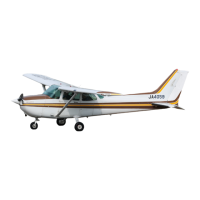
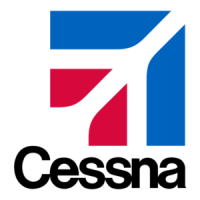

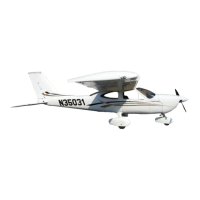
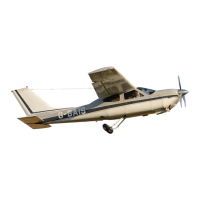
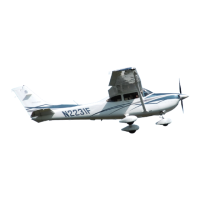



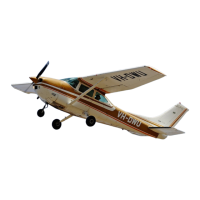


